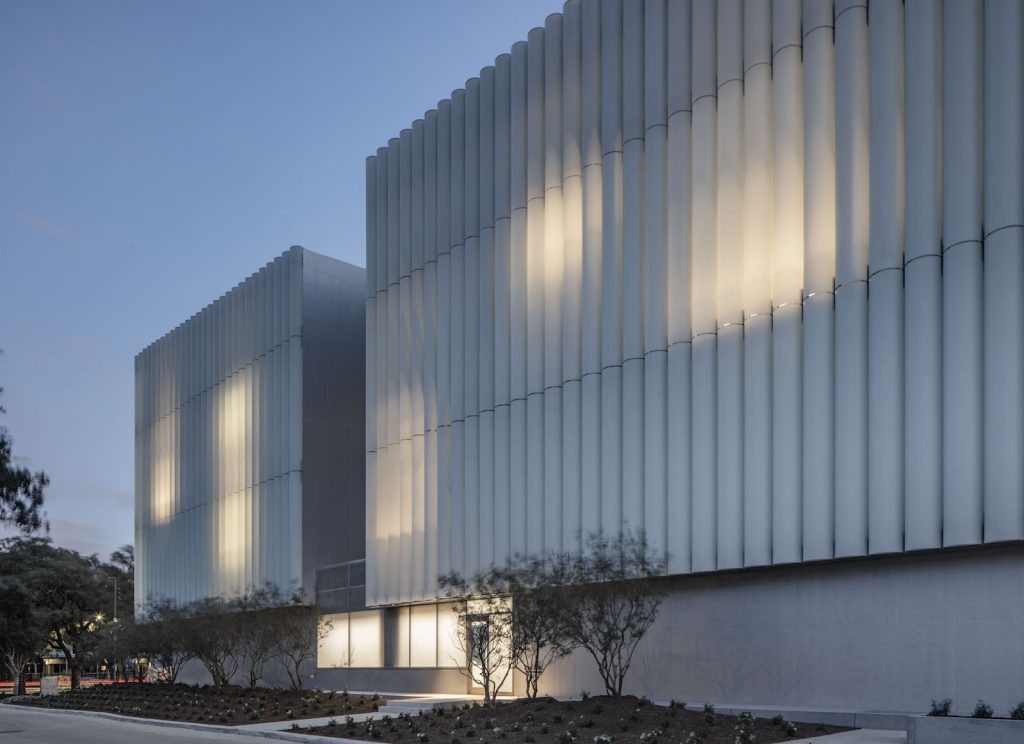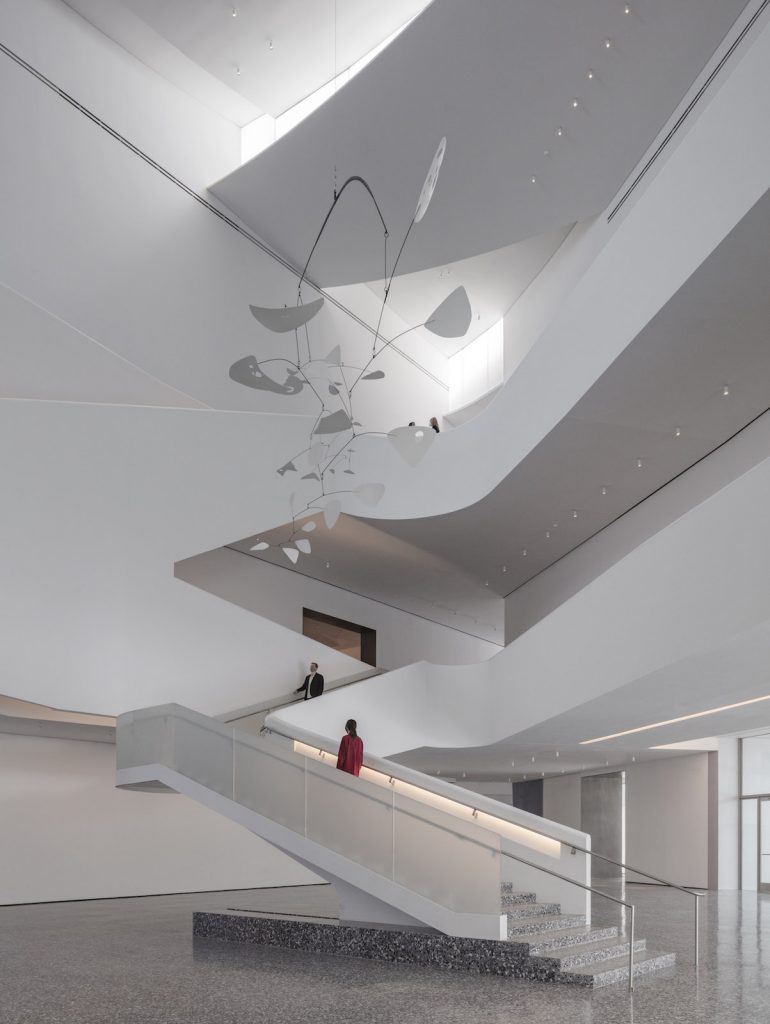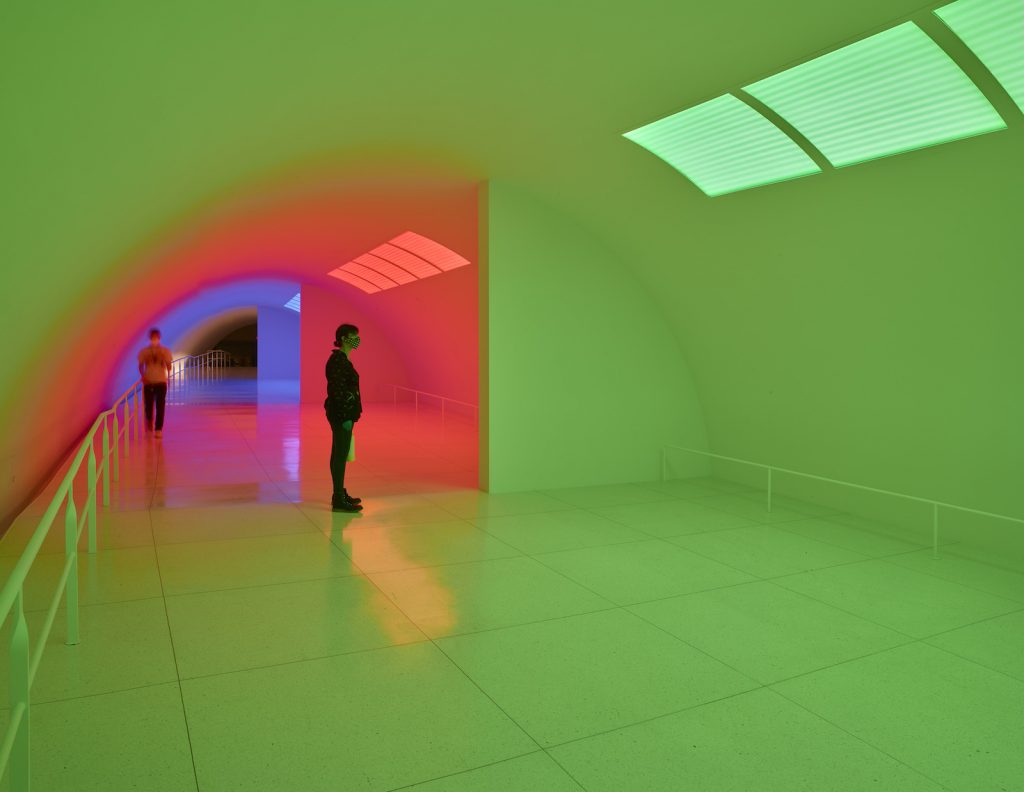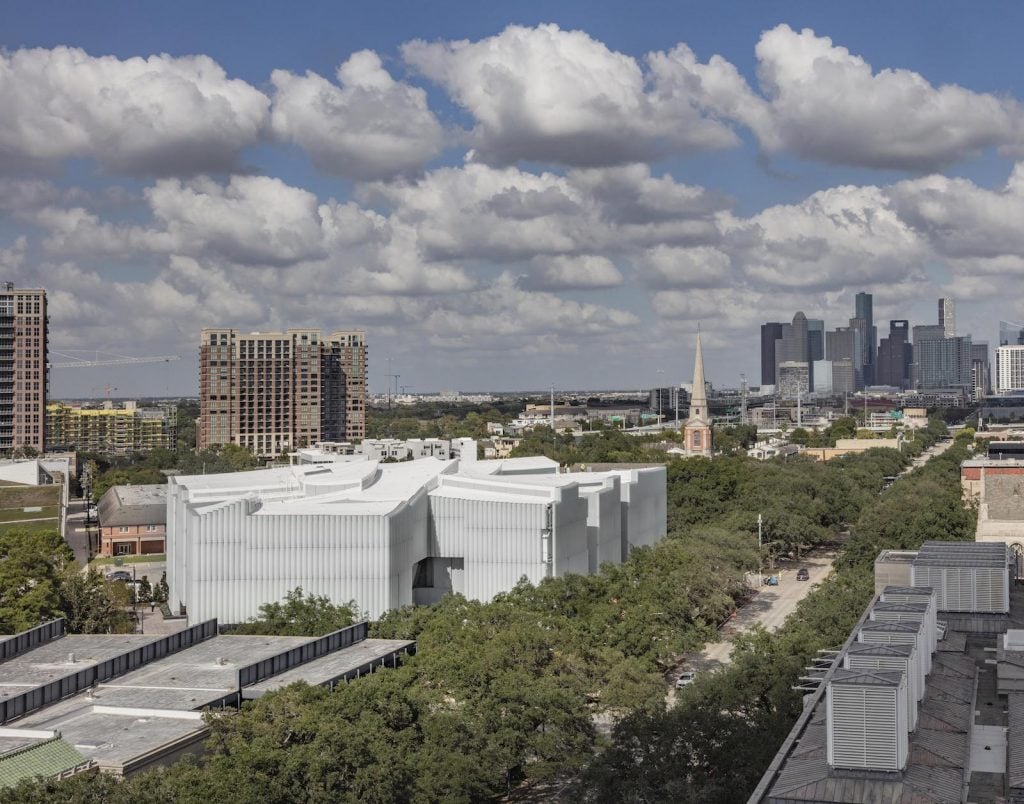Capping off an almost decade-long, $385 million expansion project, the Museum of Fine Arts, Houston, will open a new building constructed to house its dramatically growing collection of Modern and contemporary art this weekend.
The 237,000-square-foot Kinder Building was designed by Steven Holl, who is also behind the master plan for a 14-acre campus that the museum bills as the largest cultural project in North America, encompassing some 650,000 square feet of new construction.
“From around 2000, since the opening of the Beck Building, designed by Rafael Moneo, we had approximately 1,200 square feet devoted to 20th-century art,” museum director Gary Tinterow told Artnet News. “Now we have something like 150,000 square feet.”
The museum’s holdings of Modern and contemporary art have grown by leaps and bounds since a staggering 2007 gift from Caroline Wiess Law, who left the museum the majority of her oil estate, valued at upwards of $400 million.
Acquisitions went into “overdrive” at that moment, Tinterow said, and from that fund, the museum commissioned site-specific pieces by eight artists to adorn the new facility: El Anatsui, Byung Hoon Choi, Carlos Cruz-Diez, Ólafur Elíasson, Trenton Doyle Hancock, Cristina Iglesias, Jason Salavon, and Ai Weiwei.

The Nancy and Rich Kinder Building at the Museum of Fine Arts, Houston, north facade. © Richard Barnes, courtesy of the Museum of Fine Arts, Houston.
The museum has also devoted $60 million over 20 years to building a collection of art by Latinx artists and to create an institute for the study of Latin American art led by Mari Carmen Ramírez, the curator who has overseen the project from the start.
Fully one-quarter of the art on show in the new galleries is by Latin American and Latinx artists. Among the prizes are works by Lygia Clark, Gego (aka Gertrud Goldschmidt), Hélio Oiticica, Mira Schendel, and Joaquín Torres-García.
“Mari Carmen has been a trailblazer, as she was at the Blanton Museum of Art before she came here,” Tinterow said. “She motivated a number of supporters and collectors in our area to support her mission to create an extraordinary collection and to create a center for the study of Latin American art, which was also lacking in a museum setting in the US, and she’s done that brilliantly. The endowment allowed her to acquire many more and much more substantial works of art.”
Many Western museums have recently made efforts to balance their heavily white collections, focusing on artists from neglected regions such as Asia, the Middle East, Africa, and Latin America. But no institution, reports the New York Times, has amassed a greater collection of Latinx works—some 400 by 71 artists, along with upwards of 825 Latin American artworks by 211 artists.

The Nancy and Rich Kinder Building at the Museum of Fine Arts, Houston, atrium. Alexander Calder, International Mobile, 1949, sheet aluminum, rods and wire, the Museum of Fine Arts, Houston, Gift of D. and J. de Menil in memory of Marcel Schlumberger © 2020 Calder Foundation, New York / Artists Rights Society (ARS), New York. © Richard Barnes, courtesy of the Museum of Fine Arts, Houston.
The MFA was the first major American museum to reopen, in May, after much of the country shut down in March. Asked how the situation has affected the expansion project, Tinterow said it was “a great burden at this moment globally, and its affects have been, for many, devastating. But construction in Texas was deemed an essential activity, and we implemented any number of safety protocols to maintain a safe worksite, with no transmission onsite as far as we know.”
On top of that, Hurricane Harvey, which came in 2017, cost the museum millions of dollars and caused months-long delays, flooding newly excavated foundation of the Kinder Building, and destroying a great deal of construction equipment.
“And they don’t sell these things at the Home Depot,” Tinterow quipped.

Installation view of Carlos Cruz-Diez’s Cromosaturación MFAH, Paris 1965 / Houston 2017. Photo by Thomas Dubrock, courtesy of the Museum of Fine Arts, Houston.
“Another obstacle were unanticipated tariffs placed on equipment coming from abroad, such as German steel and Chinese glass, which added millions of dollars,” he said. “And, at the end, there were visa restrictions that made travel for some of our artists or craftspeople or experts difficult, if not impossible.”
But while many major metropolitan museums have become heavily dependent on tourism, Tinterow pointed out that upwards of 90 percent of the MFA’s visitors are local. “So the good news is, we don’t depend on our traffic coming from the airport.”
“We could have just met the construction deadline and closed the museum until we felt that the circumstances were more convivial,” he said. “But our visitors continue to come, safely. They find wisdom, inspiration, knowledge, and solace in works of art, and so we can continue to complete our mission, and to serve our town.”









